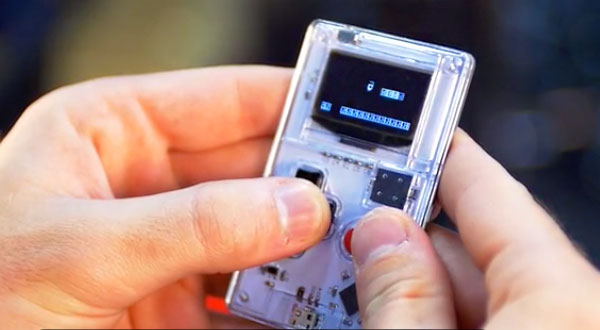Arduboy, a new pocket-sized 8-bit game device, has ignited a firestorm of interest on Kickstarter. With 27 days to go, the campaign already has drawn contributions of more than eight times its modest $25k goal.
The rapid funding response could spark a miniature retro revolution. The handheld Arduboy has the potential to divert gamers from smartphones and tablets.
Arduboy is a throwback to the Game Boy of yesteryear. However, it comes loaded with modern technology to make it relevant for today’s pocket gamers and developers.
What It Is
The Arduboy game system is a credit card-sized console. It plays all the classic 8-bit games. It encourages programming skills and user game making and swapping.
“Sometimes simple, inexpensive and robust is very attractive, and that is showcased in the Arduboy,” said Rob Enderle, principal analyst at the Enderle Group.
Arduboy is an open platform. The games are built upon the Arduino chipset.
Users can simply play games, or create new games and share games. Arduboy will ship with one or more classic games preinstalled. Users can download 20 more games directly from the free Arduboy Arcade.
The Arduino platform software makes the pocket device a cool way to learn how to program. Because users can learn to make their own games, Arduboy is a game system the size of their imagination, Bates said.
The 8-bit games display on Aduboy’s black-and-white 128×64 1-Bit OLED display. They include Ardumon, Space Rocks, Cascade Path, Alien Attack, Maruino and Tank Battle.
The game device runs on an ATmega32u4 processor with 32 KB Flash, 2.5 KB RAM, 1 KB EEPROM memory and USB 2.0 with built-in HID profile connectivity.
Programming is accomplished using Arduino IDE, Codebender, GCC and AVRDude.
Look and Feel
The design and retro appeal contribute to the overnight success of the development and funding campaign. Arduboy has durable metal and polycarbonate construction with a stamped metal back. Its front panel with six buttons and tiny display resemble a classic Game Boy.
The device also serves as a digital business card and QR code holder as well as an 8-bit audio synthesizer.
A keyboard or mouse controller can be hooked up through its USB port.
It has a two-channel Piezo speaker and a blinking cursor. It allows users to tap into the vast Arduino community for support in using it as a programming device.
“I have to believe that the key reason [for its success] is that it is has a pedagogical element today, potentially allowing folks to dabble and learn the precepts of programming in a fun way,” said Al Hilwa, program director for software development research at IDC.
“That it is also small, inexpensive, retro and on Kickstarter closes the deal,” he told LinuxInsider.
Portable and Quaint
Arduboy performs for the long-haul user. It has an integrated 180mAh thin-film polymer lithium-ion battery that lets you play for about eight hours before you need to recharge. It uses a standard micro-USB cable.
Arduboy is designed to remind you of a more simple time in the world of gaming.
“If you think back, we have a tendency to throw features at elegant and simple products, making them painful to use and learn over time. The Arduboy is a back-to-basics handheld game system that takes people back to the day when you could just sit down and play a game — not download, then find an app, then worry about going broke from in-game purchases,” Enderle told LinuxInsider.
Bare Shelves
The first 1,000 Arduboys are all gone already — they went to the first 1,000 backers at a special buy-in price of US$29.95. You can preorder one now for $39.
The developers will offer an education kit for classroom use to help teach students to program. Bates spent the last year in China working on design and manufacturing. The entire line will be ready for shipping in October.






















































